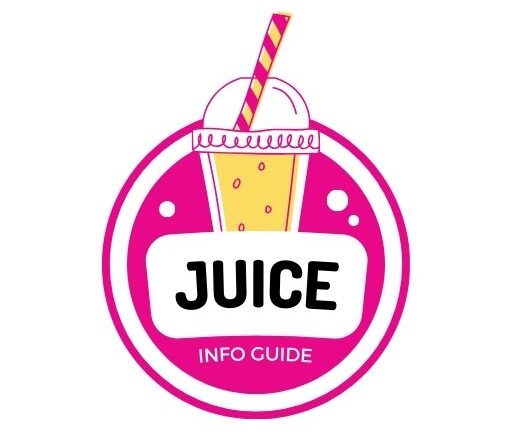As a juice recipes expert, I’m often asked about the most fundamental ingredients in our favorite cocktails and dishes: limes. Whether you’re crafting a refreshing margarita or adding a zesty twist to your guacamole, understanding how much juice is in a medium lime is crucial. Let’s dive into the world of citrus and uncover the secrets behind this versatile fruit.
The Basics: What is a Medium Lime?
Before we explore the juice content, it’s essential to define what a medium lime is. Typically, a medium lime is about 1.5 inches in diameter, which is the standard size you’ll find in most grocery stores. These limes are often of the Persian variety, known for their oval shape and vibrant green skin.
How Much Juice is in a Medium Lime?
The amount of juice in a medium lime can vary slightly depending on factors like the lime’s freshness and how it’s squeezed. However, on average, you can expect to get about 2 tablespoons of fresh lime juice from one medium lime. This equates to approximately 1 fluid ounce or 30 milliliters of juice. For those who prefer metric measurements, a medium lime yields around 23 milliliters of juice, as some enthusiasts suggest.
Why Fresh Lime Juice Matters
Fresh lime juice is a game-changer in many recipes. It adds a brightness and depth of flavor that bottled juice simply can’t match. Whether you’re making a classic cocktail or a zesty salad dressing, using fresh lime juice will elevate your dish to the next level. Plus, it helps preserve the color and freshness of ingredients like avocados in guacamole.
Tips for Juicing Limes
Getting the most juice out of your limes can be a bit tricky, but here are some tips to help you maximize your yield:
– Use a Hand Juicer: Tools like the Bellemain Squeezer make it easy to extract juice without wasting any of the precious liquid.
– Squeeze at Room Temperature: Limes yield more juice when they’re at room temperature.
– Roll Before Squeezing: Gently rolling the lime on the counter before squeezing can help release more juice.
Substituting Lime Juice
If you don’t have fresh limes on hand, you can substitute with bottled lime juice. However, be cautious of sweetened varieties, as they can alter the flavor profile of your dish. Always check the label to ensure you’re using pure lime juice.
Lime Varieties: A Quick Guide
While Persian limes are the most common, other varieties like Key limes offer distinct characteristics. Key limes are smaller, more acidic, and have a stronger scent. They’re ideal for desserts like Key lime pie but require more limes to achieve the same amount of juice as Persian limes.
Recipes to Try
Now that you know how much juice is in a medium lime, let’s put it to use in some delicious recipes:
- Classic Margarita:
– 2 ounces tequila
– 1 ounce fresh lime juice (about half a lime)
– 1/2 ounce triple sec
– Salt for rimming glass
- Guacamole:
– 3 ripe avocados
– Juice of 1 lime (about 2 tablespoons)
– 1/2 red onion, finely chopped
– Salt and pepper to taste
- Lime and Herb Salad Dressing:
– 2 tablespoons fresh lime juice
– 1/4 cup olive oil
– 1 tablespoon chopped fresh herbs (like parsley or cilantro)
– Salt and pepper to taste
The Power of Lime Juice in Cooking
Lime juice is more than just a flavor enhancer; it’s a versatile ingredient that can transform dishes from bland to grand. Whether you’re adding a squeeze to grilled meats, vegetables, or salads, lime juice brings out the natural flavors and adds a refreshing twist.
Crafting Your Own Lime Juice Recipes
Experimenting with lime juice is all about balance and creativity. Here are some ideas to get you started:
– Lime and Ginger Marmalade: Combine fresh lime juice with ginger and sugar to create a tangy marmalade perfect for toast or as a glaze for meats.
– Lime and Cucumber Refresher: Blend lime juice with cucumber, mint, and a touch of sugar for a refreshing summer drink.
– Lime Zest Cookies: Use lime zest and juice to create a zesty cookie that’s perfect for a citrus lover.
The Art of Copywriting in Recipe Development
When developing recipes, the art of storytelling is just as important as the ingredients. A good recipe should tell a story—of flavors, textures, and aromas. It should guide the reader through a journey of culinary exploration, making them feel like they’re part of the process. Whether you’re writing a recipe or a blog post, understanding your audience and crafting a narrative that resonates with them is key. This is where copywriting skills come into play, turning concepts into engaging stories that captivate and inspire.
In the world of food and drink, narratives are woven around the senses—sight, smell, taste, and touch. A well-crafted recipe should evoke these senses, painting a vivid picture that makes readers want to dive in and start cooking. By combining the art of storytelling with the precision of recipe development, you create a culinary experience that goes beyond just following instructions.
Bringing It All Together
Understanding how much juice is in a medium lime is just the beginning. It’s about unlocking the potential of this versatile fruit and using it to elevate your cooking and mixology skills. Whether you’re a seasoned chef or a curious beginner, experimenting with lime juice will open doors to new flavors and recipes that will delight your senses and leave you wanting more. So, go ahead, squeeze that lime, and let the culinary journey begin!
